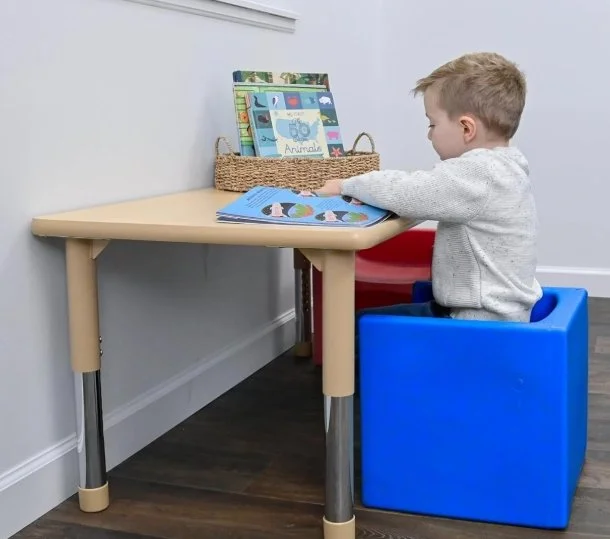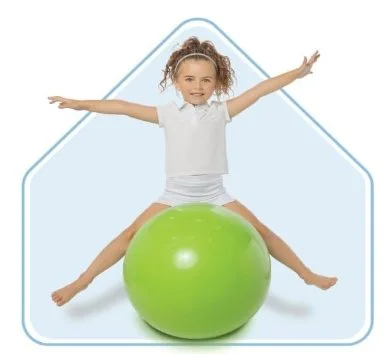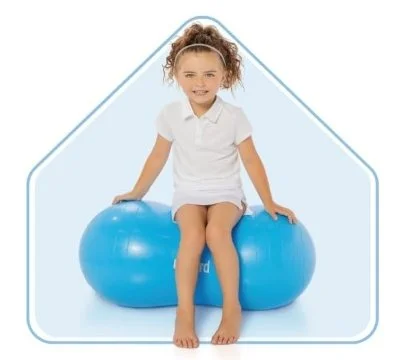Seating Options
As a physical therapist and mother of a child with Down syndrome, I am always looking for new ways to encourage carry over from what we do in PT sessions to a child’s home and vice versa, things in a child’s home that can translate to my therapy session or child’s classroom. I often use ideas from things I trial with my daughter.
These seating options can provide opportunities for movement while promoting postural control, balance, coordination, strength, endurance and focus in the academic setting. When a child is actively engaging their proximal muscle groups they have more control in their distal muscle groups, essential for many classroom activities. These ideas do not just apply to school settings, but to the home setting as well.
Cube chair
The cube chair is a great option for smaller children. It offers three different height options as the child grows. We want to promote weight bearing through feet with hips, knees & ankles at around 90 degree angle for optimal postural activation and trunk control.
Peanut Ball
The peanut ball offers different size options to accommodate each child’s needs. With feet planted in straddle sit position, the peanut ball allows for gentle weight shifting, promoting abdominal and oblique activation. The peanut ball can also be used with both feet in front of ball to promote greater postural control and trunk strength.
Swiss Ball
The Swiss ball chair promotes postural control, while allowing the child opportunities for movement and sensory input. It is an incredible tool in the classroom or home setting! Use with or without the frame depending on the child’s balance.
Dynadisc
The dynadisc can be used directly on the floor or the child’s chair. The cushion promotes core stability, trunk engagement, balance and postural awareness. It can also be used behind the child’s back to prevent slouching, as it provides gentle tactile input to encourage more upright posture.
Wedge cushion
The wedge cushion is a wonderful tool to address sitting posture. The wedge allows for slight pelvic tilt, encouraging engagement of trunk musculature. It comes in two sizes. The larger size is ideal for the floor, while the smaller size fits easily on the child’s chair.
Foam Wedge
Working in prone is another great alternative addressing upper body weight bearing, shoulder strength & stability, back extensor mobility, head & neck extension. The addition of the foam wedge promotes greater back extensor strength & shoulder stability challenge in prone position! You can also do prone over that peanut ball that was mentioned earlier.









